Guide Vane in Axial Fan: Enhancing Efficiency
Overview: Axial-flow fans move air parallel to the shaft, making them ideal for high-volume, low-pressure ventilation. In such fans, the spinning blades impart a swirl to the airflow. Stationary guide vanes (stator vanes) are often installed downstream of the impeller to straighten the flow. These fixed vanes capture the swirling kinetic energy and convert it back into useful static pressure. In practice, vane-axial fans (axial fans with guide vanes) achieve higher static pressure and better overall efficiency than simple tube-axial fans.
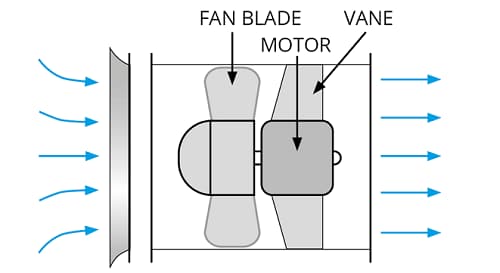
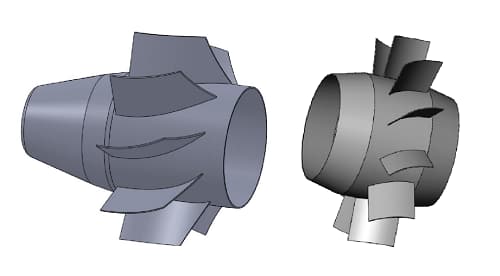

Diagram of guide vane structure
A vane-axial fan includes a bank of stationary guide vanes behind the rotating blades. The vanes straighten the airflow and recover pressure from the impeller’s swirl. This straightening minimizes turbulence and converts velocity pressure into static pressure. The result is a higher fan efficiency and greater pressure rise.
How Guide Vanes Improve Fan Efficiency
Axial fans inherently leave some tangential (swirl) component in the discharge flow. Without vanes, that swirl energy is wasted and exits as velocity pressure. Guide vanes “force” the flow back to axial, eliminating swirl and recovering that energy as pressure. In effect, the vanes act like a static counter-rotating stage: they reduce turbulent eddies and recover the dynamic pressure (due to rotation) into useful static pressure. Several studies and manufacturers note that guide vanes can substantially improve axial fan performance. For example, one manufacturer reports that adding downstream vanes recovers rotational losses and boosts static pressure and efficiency. Another shows that vanes can raise the fan’s pressure by 20% (up to 25%) without extra power input.
Key benefits of guide vanes include:
-
Swirl reduction: Vane sections remove the residual swirl from the impeller, straightening the flow. This restores the margin for static pressure recovery in the fan.
-
Static pressure recovery: By converting velocity (kinetic) pressure to static pressure, vanes boost the fan’s pressure rise. Tests show vane-axial fans often deliver higher pressure than tube-axial designs at the same power.
-
Efficiency gain: With less wasted energy in the outlet swirl, vane-axial fans run more efficiently. Industry guides cite typical energy savings around 5–10% (often up to 15%) when guide vanes are added to high-pressure axial fans.
-
Better operating range: Guide vanes expand the efficient operating range. Fans with stators maintain higher efficiency across loads, which helps in part-load or variable-flow systems.
-
Noise reduction: Smoother, straightened flow through vanes can also lower aerodynamic noise. Some vane-axial designs report quieter operation (a few dB reduction) compared to propeller fans without stators.
In practice, adding vanes usually costs only a little more money per inch of fan and no more motor power, yet yields noticeable efficiency and pressure gains.
Typical Efficiency Gains and Design Considerations
In many large-duct axial fans, manufacturers and engineers quote efficiency improvements on the order of 5–15% thanks to guide vanes. For example, an energy-efficiency guide notes that fixed outlet vanes can save roughly 5–10% of fan energy when the system static pressure is high (above 750 Pa). Another industry source reports that vane-axial fans achieve about a 20% higher pressure rise on average (and up to 25% in some cases) compared to similar fans without vanes. These gains occur with essentially no extra input power – the motor load remains about the same while the fan produces more useful pressure.
It’s important to note that guide vanes are most beneficial when the fan has room in its outlet (for the vane section) and operates at moderate to high pressure. In very low-pressure or very small fans, vanes add cost and flow restriction that may not pay off. But for high-flow fans in long duct systems, or where safety requires stable pressure (e.g. smoke exhaust fans), vanes are common. In practice, engineers choose vane-axial fans for larger sizes or higher pressures, where straightening the flow yields a real efficiency boost.
Common Applications
Guide-vane axial fans appear across many ventilation and exhaust systems, especially in contexts requiring high flow and pressure control:
-
Commercial Building Ventilation: Large HVAC and exhaust fans in offices, schools, and malls often use vane-axial designs. For example, smoke exhaust and stairwell pressurization fans in commercial buildings rely on high-capacity fans. Guide vanes help these commercial fans achieve the needed static pressure with better efficiency. Rooftop units (roof fans) handling large volumes also benefit, since vanes allow a given fan to deliver higher pressure without more power.
-
Smoke Exhaust and Fire Safety Fans: In smoke control systems, fans (often paired with fire/smoke dampers) must move air reliably even under emergency conditions. Guide vanes improve the fan’s ability to sustain flow through partially closed or varying ducts, aiding fire safety operation. In fact, products certified for smoke exhaust frequently offer optional guide-vane sections. As one manufacturer states, adding a guide vane “enables higher pressure and efficiency” for smoke exhaust fans. This ensures that fans clear smoke effectively through fire smoke dampers and vents during emergencies.
-
Industrial Ventilation Fans: Factories, warehouses, and process plants use heavy-duty axial fans for air movement, fume extraction, and cooling. These industrial fans often have vane-axial variants. The stationary vanes recover energy from the thick, turbulent flow leaving large impellers, so the fan can push air further (higher static) or use smaller motors. Many industrial roof-vent and duct-vent fans are built as vane-axial for exactly this reason.
-
Tunnel and Metro Fans: Ventilating subways, mines, and tunnels requires extremely high flow and pressure. In these applications, guide vanes are practically standard. A ventilation engineering review notes that when axial fans are used in underground or tunnel spaces, “the attachment of guide vanes is quite common”. The long ducts and high safety requirements mean every bit of swirl-recovered pressure counts. Metro tunnel fans are often specified with outlet vanes to maximize extraction performance while saving energy.
-
Nuclear-Grade Fans: Nuclear power plant ventilation demands robust, high-efficiency fans. Nuclear-grade axial fans are typically the largest and must be extremely reliable. In this context, outlet guide vanes (OGVs) play a critical role. A recent study of nuclear-fan design highlights that adding optimized OGVs “recovers the kinetic energy” of the impeller outlet and significantly raises total pressure and efficiency. In fact, nuclear fans with guide vanes show measurable pressure boosts and quieter operation compared to those without, confirming vanes’ value in even the most demanding applications.
Across all these cases, manufacturers of ventilation and smoke exhaust fans note that vane-axial designs are “the most efficient axial design” for high-flow, medium-to-high pressure needs. Guide vanes allow the fan to generate higher pressure while using less energy.
Working with Ventilation and Smoke Exhaust Fan Manufacturers
When planning a ventilation or exhaust system, it pays to consult experienced fan manufacturers. Leading ventilation and smoke exhaust fan manufacturers are well aware of the role of guide vanes. Many offer vane-axial fans or optional vane sections as standard for larger fans, explicitly noting that adding a guide vane enables “higher pressure (up to 20–25% pressure gain) and efficiency” for their axial fans.
In practice, specifying the right fan size and vane option is a trade-off: above a certain flow/pressure threshold, vanes yield clear efficiency returns. Manufacturers can apply their empirical design data to decide when to include vanes. They also handle geometry – number of vanes, camber angle, axial length, etc. – to optimize performance in each application. For example, for us SHUANGYANG FAN, we include guide vane for DTF series variable pitch fan when its impeller diameter greater than 12.5 decimeter.
By working with a knowledgeable ventilation and smoke exhaust fan manufacturer, engineers can ensure guide vanes are used where they deliver maximum benefit, without over-building the fan.
Conclusion: In summary, guide vanes are a proven way to boost axial fan efficiency. By straightening the post-impeller flow and recovering dynamic pressure, vanes typically yield 5–15% energy savings and higher static pressure on the same fan motor. These gains are especially important in high-volume ventilation and exhaust roles – from commercial building HVAC and roof fans, to smoke exhaust systems with fire safety dampers, to large industrial and tunnel ventilators, and even nuclear plant fans. When efficiency, pressure capability, and noise reduction are priorities, vane-axial fans are generally the preferred choice. In all such systems, partnering with an experienced ventilation and smoke exhaust fan manufacturer ensures the guide-vanes are correctly specified, delivering optimal airflow with maximum energy savings.
Note: The data is for reference only, please consult relevant companies for details. And the content of the article cannot avoid omissions and errors. Welcome to propose corrections.
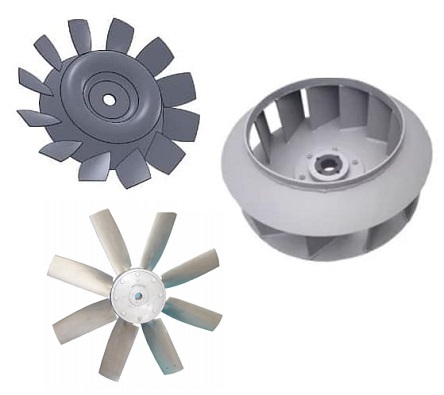 Libere el poder del ventilador de gabinete
Libere el poder del ventilador de gabinete
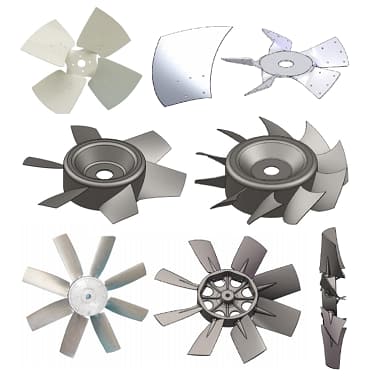 Ventilador axial industrial: Cómo mantener una circulación de aire adecuada
Ventilador axial industrial: Cómo mantener una circulación de aire adecuada
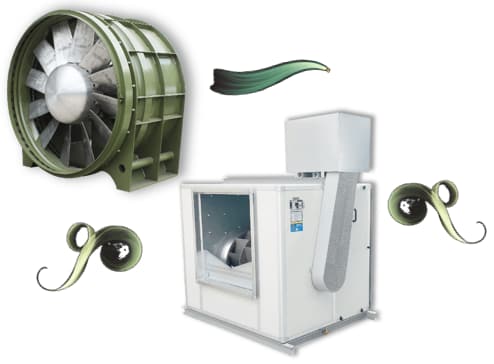 Ventilador de ventilación industrial: manteniendo una buena calidad del aire
Ventilador de ventilación industrial: manteniendo una buena calidad del aire
 Ventilador a prueba de explosiones: garantizando la seguridad en entornos peligrosos
Ventilador a prueba de explosiones: garantizando la seguridad en entornos peligrosos

